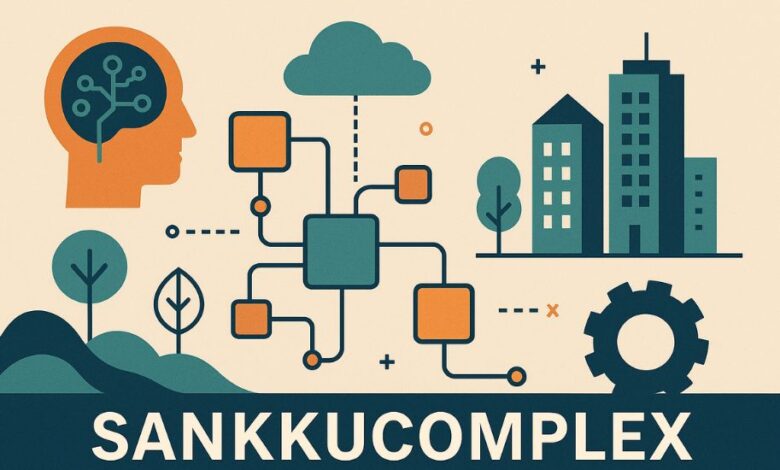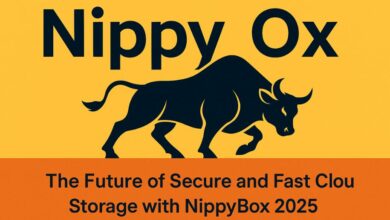Sankkucomplex: The Modular Systems Worldview Shaping the Future of Design, Technology, and Cities

In an era where complexity defines nearly every sector—from technology and city infrastructure to sustainable systems and human behavior—Sankkucomplex emerges not just as a design principle but as a transformative worldview. It represents the convergence of systems thinking, smart integration, and modular innovation, serving as a guiding framework for how we approach the intricate ecosystems of the modern world.
This article explores Sankkucomplex as a philosophical and practical paradigm, examining its roots, applications, and implications across various domains including software design, city planning, cognitive development, and sustainable engineering.
📌 What is Sankkucomplex?
Sankkucomplex can be defined as a modular approach to complexity, one that sees systems not as rigid, isolated units but as interconnected, adaptable ecosystems.
It draws from:
-
Systems thinking – seeing parts in relation to the whole
-
Modularity – designing flexible, replaceable, and scalable components
-
Integration – intelligently combining diverse elements into functional systems
This model promotes building structures—both physical and conceptual—that are resilient, intelligent, and purpose-driven.
🧠 Origins and Philosophy of Sankkucomplex
While the term “Sankkucomplex” is relatively modern, its underlying philosophy is deeply rooted in interdisciplinary traditions:
-
From biological ecosystems that self-regulate and adapt,
-
To urban systems that require flexibility in zoning, energy, and mobility,
-
To cognitive frameworks that mimic neural plasticity.
Sankkucomplex embodies the idea that structure and adaptability are not opposites—they are co-creators of sustainable complexity.
🏗️ Core Principles of Sankkucomplex
1. Modularity
Systems are broken into manageable parts that can evolve independently without disrupting the whole. This is seen in:
-
Software (microservices architecture)
-
Buildings (prefabricated units)
-
Organizational structures (cross-functional teams)
2. Resilience
Resilient systems are not just strong—they adapt, recover, and transform in response to disruption. Sankkucomplex promotes redundancy, feedback loops, and dynamic reconfiguration.
3. Scalability
From single homes to megacities, or a lone user to a billion, Sankkucomplex systems scale horizontally and vertically.
4. Integration
Rather than isolated specialization, it encourages synergistic convergence: urban planning + climate modeling + behavioral design = future-ready cities.
🔁 Sankkucomplex in Action: Where It Comes to Life
A. Software Architecture
In tech, Sankkucomplex manifests through microservices, modular APIs, and containerization (like Docker, Kubernetes). These allow:
-
Fast deployment
-
Independent updates
-
Self-healing processes
-
System-wide observability
Example: Netflix’s backend runs hundreds of microservices—each handling its own logic while contributing to a seamless user experience.
B. Urban Design & Smart Cities
Sankkucomplex-inspired cities:
-
Are built with modular housing (like 3D-printed buildings)
-
Employ GIS data for infrastructure optimization
-
Integrate green corridors, transport nodes, and waste systems as one living body
Case Study: “Mitosis” by GG-loop—an evolving biophilic housing concept that grows like cellular organisms.
C. Sustainable Engineering
Eco-systems must:
-
Regenerate energy and materials (circular design)
-
Operate on modular hardware (e.g., solar panels, smart water systems)
-
Respond to climate stressors via data integration
Sankkucomplex supports long-term planetary resilience.
D. Cognitive Science & Education
Neuroscience increasingly validates modular brain functioning:
-
Localized functions with global interactivity
-
Neural networks that “re-route” post-injury (like redundant system backup)
-
Adaptive learning environments built like layered networks
In learning design, this manifests as modular curricula, adaptive platforms, and AI-informed personalized content.
🌍 From Structure to Ecosystem: The Paradigm Shift
Sankkucomplex transcends structure. It encourages us to think in ecosystems—organic, evolving, feedback-rich environments.
| Old Worldview | Sankkucomplex Worldview |
|---|---|
| Linear systems | Interconnected webs |
| Fixed blueprints | Modular growth |
| Resistance to disruption | Built-in adaptability |
| Resource extraction | Resource regeneration |
| Top-down planning | Bottom-up emergence |
The digital age demands fluidity, resilience, and intelligence in everything we build.
“Those who can understand, build, and manage Sankku complex systems will be the architects of the future.”
This framework isn’t just for specialists. Its impact is felt in:
-
Business – hybrid workplaces and modular products
-
Government – participatory and flexible policy ecosystems
-
Education – networked learning
-
Health – personalized diagnostics and modular medical platforms
📊 Sankkucomplex Overview Table
| Domain | Application Example | Key Benefit |
|---|---|---|
| Software | Microservices, APIs | Agile updates, fail-safe ops |
| Urban Planning | Modular, smart buildings | Scalable growth, data feedback |
| Sustainability | Circular resource systems | Ecological resilience |
| Cognitive Design | Adaptive neural models, modular learning | Brain-like innovation |
-
Overcomplexity: Without constraints, systems can spiral into chaos.
-
Interoperability issues: Modular parts must speak a common language.
-
Ethical concerns: Hyper-efficient systems may ignore social nuance.
These are not deal-breakers—they are design challenges. With Sankkucomplex as the foundation, they’re solvable.
🚀 Sankkucomplex and You: How to Adopt This Mindset
-
In Your Work: Break processes into adaptable modules.
-
In Learning: Embrace nonlinear paths and interconnected knowledge.
-
In Daily Life: Design routines and environments that can scale and evolve.
-
In Teams: Foster decentralized decision-making and feedback loops.
🔮 The Road Ahead
Sankkucomplex isn’t a buzzword—it’s a lens for designing the 21st century and beyond. It invites us to build better by designing smarter, integrating deeper, and adapting faster. As climate shifts, AI evolves, and cities expand, this systems-first, ecosystem-embracing philosophy will become not just relevant—but essential.
🧾 Final Words
Sankkucomplex challenges us to think beyond silos. It gives us a language of interconnected resilience that empowers innovation—from software code to city blocks.
If the future belongs to those who can build adaptable ecosystems, then Sankkucomplex is the blueprint.



